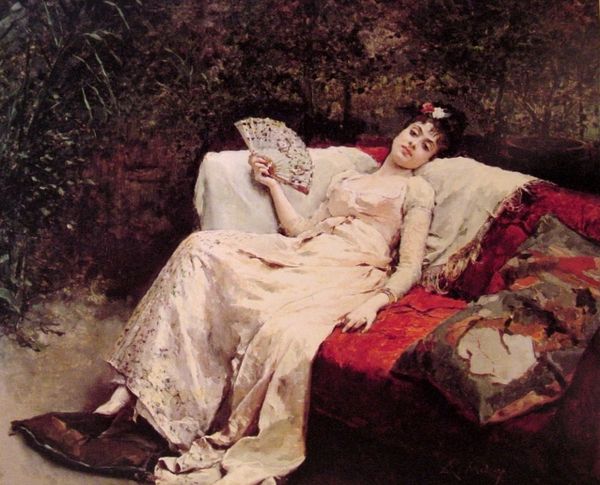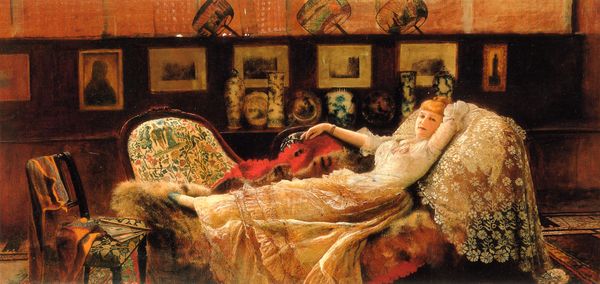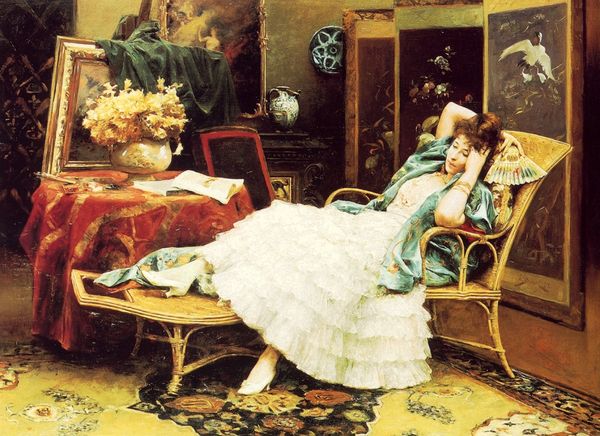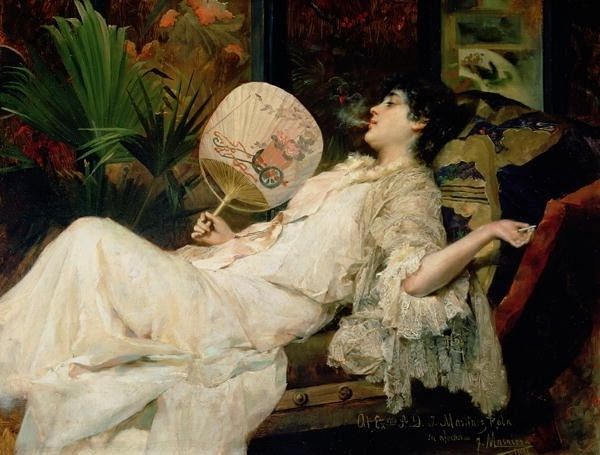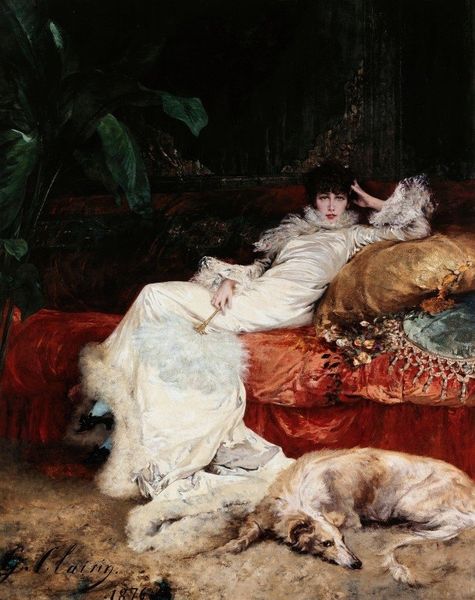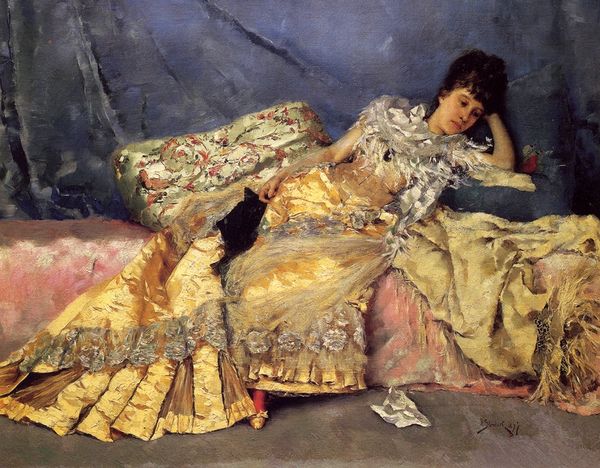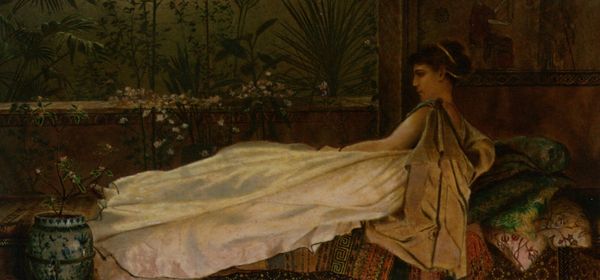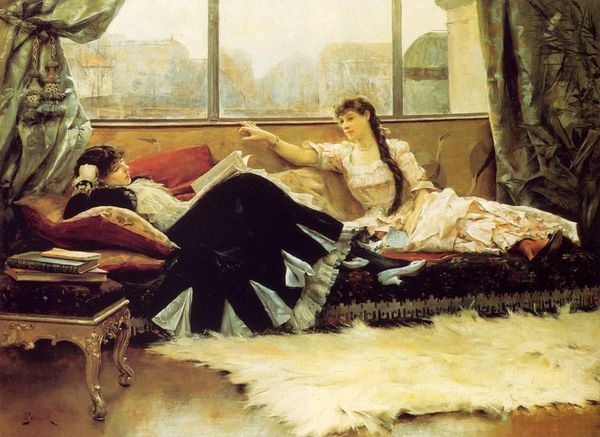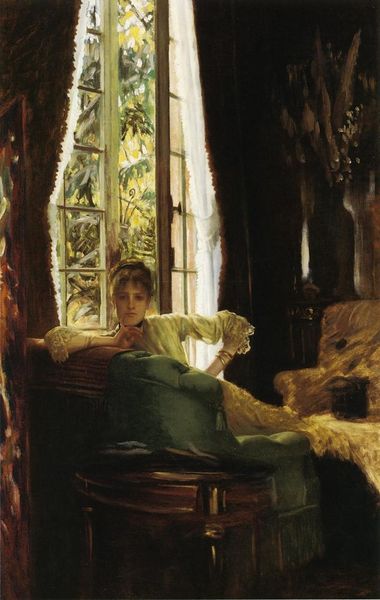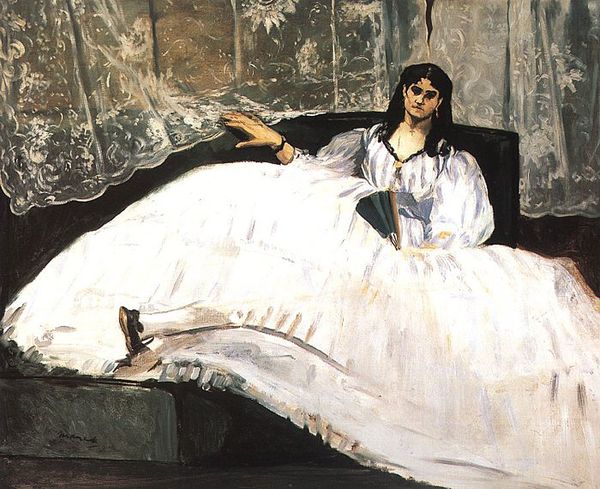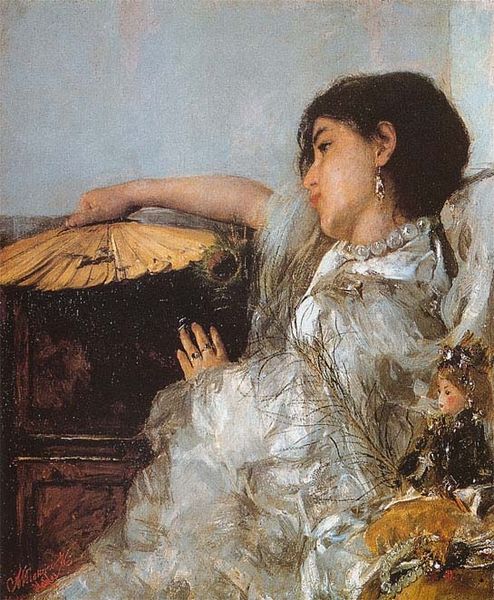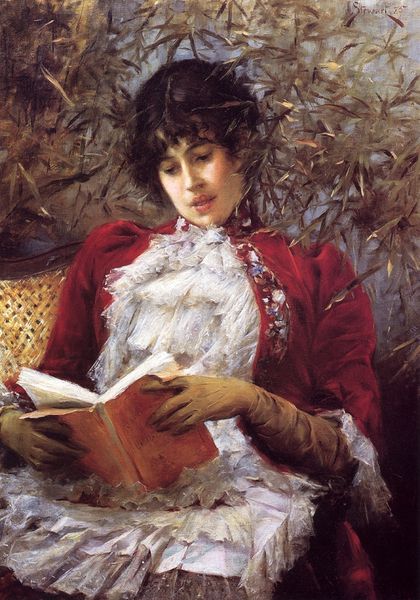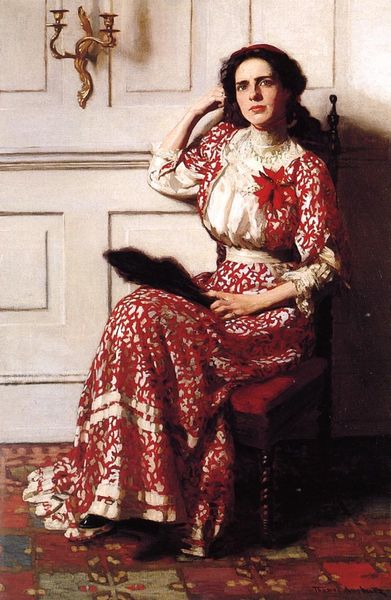
Copyright: Public domain
Curator: James Tissot's "A Girl in an Armchair," painted in 1872, presents a compelling study in leisure and contemplation through the then-popular medium of oil on canvas. Editor: It strikes me as a depiction of melancholy, a wistful pose enhanced by the overgrown ferns encroaching upon the composition. Curator: Look closely at the dress; its very fabrication speaks volumes about the economic circumstances enabling such indolence. The flowing fabric, the delicate embroidery – these details required significant material investment and skilled labor. Her dress's pattern mirrors that of the armchair itself and it’s a deliberate mirroring. Editor: And isn't the symbolism fascinating? The floral motifs embroidered onto her gown, juxtaposed against the real plants surrounding her, suggests an attempt to capture the vibrancy of nature, to domesticate and display it, but filtered through human artifice and fashion. Curator: The contrast between her pale dress and the dense green foliage underscores a specific Victorian-era engagement with display and status, where fabrics acted almost as portable indicators of the wearer's class and access to resources. Think about the labor needed for that kind of fine needlework – possibly performed in the home, potentially exploited if contracted out. Editor: True, but let's consider her gaze. It’s directed beyond the frame, inviting the viewer into her private world of introspective emotion. Her stillness invites contemplation—she is posed not just as a figure of wealth, but also as an emblem of Victorian femininity, with its prescribed constraints and unspoken longings. The armchair she leans upon feels like a sort of throne. Curator: A throne built of the textiles that define her societal role, and reliant upon the economic forces sustaining the system. Editor: A complex dance of signifiers, undoubtedly. This artwork shows the symbolic weight carried in the material objects surrounding us. Curator: Indeed. It's through that dense combination of technique, symbolism and process that the narrative of this time and social stratum unfolds. Editor: An introspection and symbol set in stillness. It gives pause for a look into a lost but relatable sense of emotional capture, while revealing wealth disparity within the work.
Comments
No comments
Be the first to comment and join the conversation on the ultimate creative platform.
